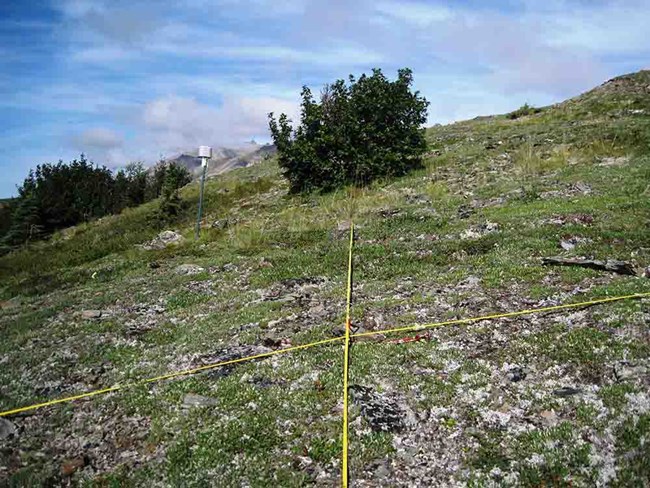Last updated: May 8, 2023
Article
Consider the source: How to build better ecological models

Ecological models are powerful statistical tools we use to aid our understanding of the complexities of ecosystems and how a warming climate may be affecting them. Information from models helps park managers to plan for and address future changes to national parks in Alaska, where climate warming is accelerated and unprecedented change in natural systems is occurring. For example, researchers have used models to estimate the relationship between climate and the distribution of boreal forest on the current landscape and how our forests may change with widespread warming in the Far North. Such changes would have important and far-reaching implications for ecosystem services such as wildlife habitat and various human uses as well as the incidence of forest fires and other important management issues.
While they provide irreplaceable information, it is nonetheless important to keep in mind that models are simplified approximations of complex natural phenomena and the old saying “garbage in = garbage out” always applies. Thus, scientists must be vigilant by constantly and critically evaluating the performance of both input data and ecological models to determine that they are accurately reflecting natural processes. In this paper, NPS scientists and our collaborators used a unique field dataset in combination with a variety of model-derived climate information to evaluate the performance of ecological models. Specifically, the researchers looked at the consistency among several different gridded historical climate products (GHCPs), which are routinely used for ecological modelling in remote northern regions. GHCPs provide estimates of variation in temperature and precipitation in time and space over large, remote areas where climate stations are rare. In these areas, such as Alaska’s national parks, climate stations are few and far between because the logistics of installing and maintaining these sites are complex and difficult.

In this paper, we evaluated the performance of seven commonly used GHCPs by comparing GHCP-derived climate estimates (1) to observed variation in surface temperature recorded at a network of stations along elevation transects in three large subarctic parks in Alaska and (2) as applied in an ecological model estimating variation in tree abundance across mountainous regions in three large Alaskan national parks. We found overall good and consistent performance of GHCP data relative to field observations across models as compared to observed temperatures and a strong positive correlation among their resulting model predictions. However, we also found variation in predictions across models, particularly in mid‐elevation areas where (for example) the position of treeline may be changing. These results suggest that researchers should exercise caution if selecting any single GHCP for use in predictive models. Instead, we strongly recommend the use of multiple GHCPs to provide additional estimates of variation beyond standard estimated prediction intervals, particularly when model predictions are employed in conservation planning. In other words, it’s best not to put all your eggs in one basket, but to employ data from more than one GHCP when seeking to make important, management-related decisions regarding the dimensions of possible future ecosystem changes in response to warming. The greater the agreement in estimates derived from different GHCPs, the greater the confidence managers can have in the conclusions drawn from these models.
Evaluating multiple historical climate products in ecological models under current and projected temperatures
Abstract
Gridded historical climate products (GHCPs) are employed with increasing frequency when modeling ecological phenomena across large scales and predicting ecological responses to projected climate changes. Concurrently, there is an increasing acknowledgement of the need to account for uncertainty when employing climate projections from ensembles of global circulation models (GCMs) and emissions scenarios. Despite the growing usage and documented differences among GHCPs, uncertainty characterization has primarily focused on GCM and emissions scenario choice, while the consequences of using a single GHCP to make predictions over space and time have received less attention. Here we employ average July temperature data from observations and seven GHCPs to model plant canopy cover and tree basal area across central Alaska, USA. We first compare the fit of, and support for, models employing observed temperatures, GHCP temperatures, and GHCP temperatures with an elevation adjustment, finding (1) greater support for, and better fit using, elevation‐adjusted vs. raw temperature models and (2) overall similar fits of elevation‐adjusted models employing temperatures from observations or GHCPs. Focusing on basal area, we next compare predictions generated by elevation‐adjusted models employing GHCP data under current conditions and a warming scenario of current temperatures plus 2°C, finding good agreement among GHCPs though with between‐GHCP differences and variation primarily at middle elevations (~1,000 m). These differences were amplified under the warming scenario. Finally, using pooled indices of prediction variation and difference across GHCP models, we identify characteristics of areas most likely to exhibit prediction uncertainty under current and warming conditions. Despite (1) overall good performance of GHCP data relative to observations in models and (2) positive correlation among model predictions, variation in predictions across models, particularly in mid‐elevation areas where the position of treeline may be changing, suggests researchers should exercise caution if selecting a single GHCP for use in models. We recommend the use of multiple GHCPs to provide additional uncertainty information beyond standard estimated prediction intervals, particularly when model predictions are employed in conservation planning.
Sardoti, G., S. A. McAfee, E. F. Nicklen, P. J. Sousanes, and C. A. Roland. 2020. Evaluating multiple historical climate products in ecological models under current and projected temperatures. Ecological Applications 0(0): e02240.
